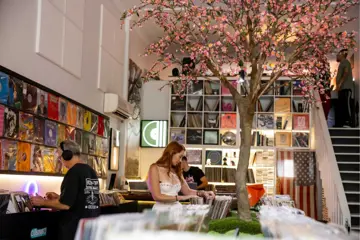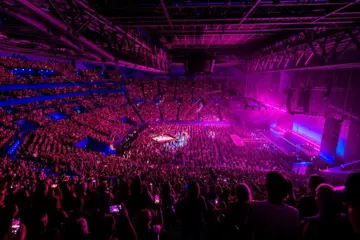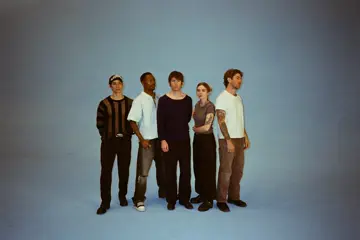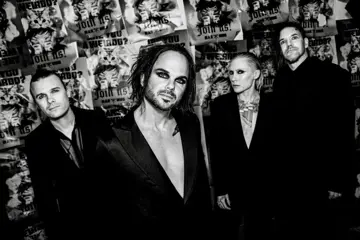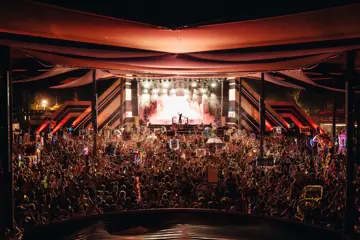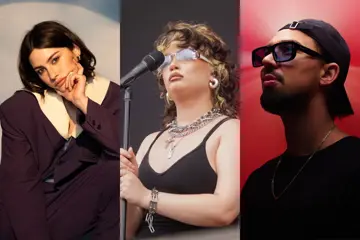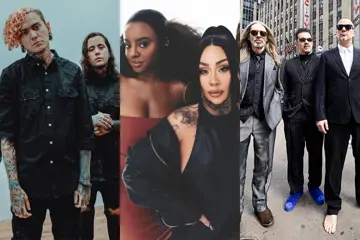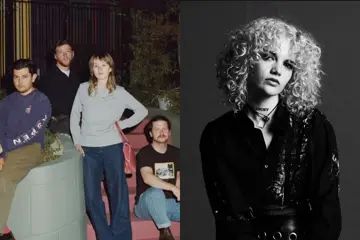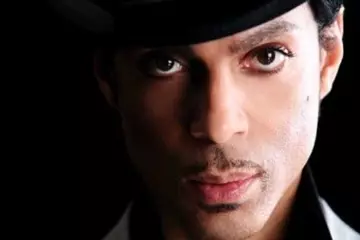In September 2022, a daily browse through Spotify alerted me to a new version of Lana Del Rey’s 2012 single Summertime Sadness, albeit with the added subtitle of "Sped Up". At the time, a cynical quip from myself made note that such a song would really save a lot of time when it comes to my listening habits, however, I was unaware that this was how I was discovering a new musical trend of the sped-up song.
So let’s get you up to – ahem – speed: what is a sped-up song? Well, as the name suggests, it is a track that has been purposely accelerated, often by around 150%. Though it might sound mystifying at first blush, its popularity is hard to ignore. While the trend itself has gained traction on video-sharing platforms such as TikTok, it has since found more mainstream acceptance, with an official playlist from Spotify (fittingly titled “sped up songs”) boasting over 1.1 million likes.
But how did we get here? Well, it’s worth noting that sped-up songs aren’t inherently a new trend. For a historical example, one need only look back to Ross Bagdasarian who, under his stage name, David Seville, launched Alvin & The Chipmunks into the world. First debuting in 1958, Bagdasarian popularised a technique utilised for The Munchkins on The Wizard Of Oz by recording vocals at around half speed, before accelerating the audio to normal speed to create a disorienting high-pitched effect.
Alvin & The Chipmunks soon became a Grammy Award-winning entity, with their songs topping the US charts and inspiring a new wave of novelty songs. The trend became a viral sensation in the late '90s when Deidre LaCarte sped up Roger Miller's 1973 song Whistle Stop and paired it with animations of dancing rodents. Within months, its popularity spawned a professional song, with The Hampsterdance Song being released under the name Hampton The Hampsters. Both the single and the first of three albums released under this moniker would both go Gold and hit the Australian top ten.
Don't miss a beat with our FREE daily newsletter
In 2001, the Nightcore genre was formed, named after the Norwegian duo of the same name. Inspired by high-pitched vocal samples on tracks by German band Scooter (including their chart-topping 2001 single The Logical Song), the duo increased the speed of popular songs by around 35% – effectively the same as playing a 33⅓ RPM record at 45 RPM. It’s this creation of Nightcore which has been specifically linked to the modern trend of sped-up songs, with the former directly leading into the latter.
An April 2022 article from Pitchfork noted that altering the speed of a song had become a copyright trick utilised by many creators in recent years, designed to get around the automatic copyright censors of platforms such as YouTube. In the same vein, however, these same creations find a life of their own, thanks in part to the more energetic vibe they take on, which is then matched by the target audience.
But where did this popularity come from? In 2018, Twitter user @nanasehirokawa made note of the burgeoning trend, stating how “sped up tiktok songs is the nightcore of this era”. As Know Your Meme points out, it was around this time that the Musical.ly/TikTok merger soon gave rise to accelerated versions of tracks like Nicki Minaj’s Roman Holiday exploding in popularity. By early 2022, a Speed Radio remix of Nelly Furtado’s Say It Right had become the flavour of the week, with the faster version having been used in over 1.7m TikTok videos to date. Even now, the hashtag #spedupsounds has over 12b views, according to the site.
More recently, those unaccustomed to the trend may have been exposed to it when the now-infamous ‘Fitzroy Garage Sesh’ went viral late last year. Many of the videos were paired with a sped-up version of Empire Of The Sun’s 2008 single We Are The People, with the audio being used over 27k times since.
@andydavie the vibes are here #melbourne
♬ are you gonna leave me now - beachbumblaine
But what does this mean for the future of music? Well, what started as a somewhat groundbreaking method of musical experimentation years ago has since proven its popularity, and with the likes of Lana Del Rey having released an official sped-up version of Summertime Sadness, does this mean others too will soon follow?
Well, yes, actually. Since the trend has taken off on social media, a number of big-name artists have jumped on the bandwagon. Canada’s Michael Bublé teamed up with Sped Up Songs + Nightcore (an artist which boasts over 1.4m monthly listeners on Spotify alone) to release an official sped-up version of the 2004 single Sway which has since reached over 17m streams.
Likewise, Demi Lovato’s 2015 hit Cool For The Summer found a new life on TikTok in early 2022, prompting the artist to collaborate with Speed Radio (over 9m monthly Spotify listeners) to release the “Sped Up (Nightcore)” version of the song, with over 48m streams to date.
Ashlea Crane, radio presenter and vocalist of Adelaide pop-punk outfit Left On Seen, is one of many artists who have experienced the rising trend of sped-up songs. While Crane notes that it’s an opportunity for more content to be crammed into a smaller window of existence, she also expresses a concern as to whether royalties will be properly attributed to the original artists as a result of what she believes is a trend that has some longevity.
“With trends, they tend to die out a little,” Crane says. “I do, however, see this one sticking around for a while. You’re able to fit more music and lyrics into a smaller amount of time. With short videos on the rise, this works in users’ favour.
“We have also seen how this trend is influencing music. Artists are trying to replicate the sounds that are popular on TikTok so users are able to find them on streaming services to hear a full-length version of the TikTok soundbite.”
Notably, one side effect of the sped-up song revolution is a loss of context. While these accelerated tracks tend to gain popularity due to their associated aesthetic choice, Crane adds that she would have “mixed feelings” if one of her songs was to gain traction due to the phenomenon.
“On the one hand, it would be great to see my music reaching a larger audience,” she explains. “On the other, with songs being sped up, they often lose their original context and meaning, as well as no longer sounding like the original artist.
“I’ve also seen a fair few artists not be given credit when sped-up versions of their songs go viral.”
On the flip side of this argument, however, is the notion of pressure being placed upon burgeoning artists to actively create material that can either be suited towards being sped up at some point or bears an aesthetic similarity to the now-popular sound.
The result of this, Crane notes, may in fact be a cyclical return to what was once popular at the turn of century, albeit with greater involvement from the original artist.
“I believe that we will see the return of DJ remixes that were quite popular around 15-20 years ago,” she explains. “Remixes can provide an artist with a wider audience. Remixes that are done in collaboration with the artist is a way that artists can maintain a little more creative licence and integrity with their music.
“There are of course remixes and samples that artists do not have a hand in, but can still get paid for the use of their work.”
However, could sped-up songs simply just be a passing fad? History does seem to indicate this could be the case. After all, the genre now dubbed “chipmunk soul” was once a ubiquitous part of the hip-hop production canon. Popularised by artists such as Kanye West and Just Blaze, and reportedly named by the legendary Questlove in response to its similarity to Alvin & The Chipmunks, the trend saw artists sampling soul hits at a higher pitch to form the basis of their songs.
The likes of Kanye’s Through The Wire or The Diplomats’ I Really Mean It utilised artists such as Chaka Khan and Major Harris, respectively, to craft a sound that now sounds intrinsically tied to a specific era of music.
Is this where we could find the sped-up genre in another two decades? Nothing but a sonic reminder of the post-pandemic era of music production?
This is something that Crane agrees could be the case, with sped-up music likely set to inform music in the short-term, and one day be a reminder of where we found music in the early years of the ‘20s.
“We’re already seeing a huge resurgence of dance and electronic music making its way back into the mainstream,” explains Crane. “TikTok trends have been informing the way music sounds and is distributed since its rise to popularity. This just happens to be one of those trends.
“Each generation has the style of music that ‘defines’ them,” she adds. “I wouldn’t be surprised if we saw a surge in young DJs creating these sped-up remixes for the club, and then those remixes becoming a part of mainstream music, and in some instances, becoming more popular than the original song.”
Of course, one question still remains: could this trend be taken the other way, where songs are instead slowed down? Well, it remains to be seen whether it will go viral on TikTok, but in 2010 producer Nick Pittsinger went viral when he slowed down Justin Bieber’s U Smile by 800%, resulting in a luscious ambient dreamscape.
By the sounds of it, our fast-paced lifestyles might one day grow tired of sped-up songs, and thus, it won’t be long before the slowed-down aesthetic catches on.

